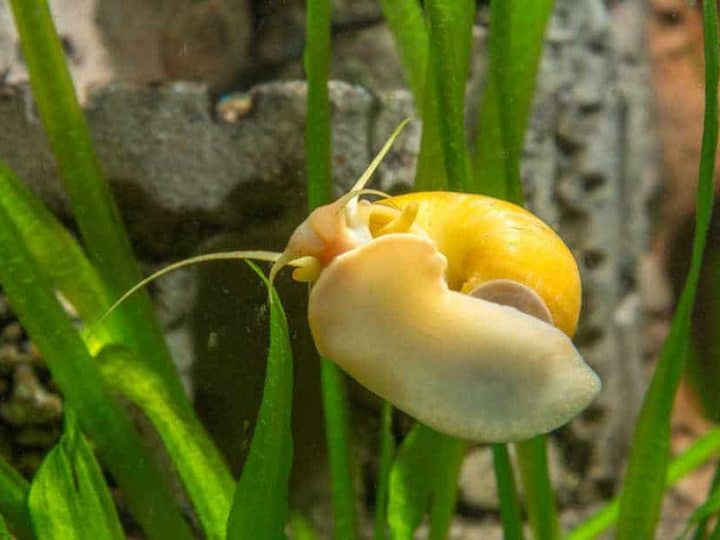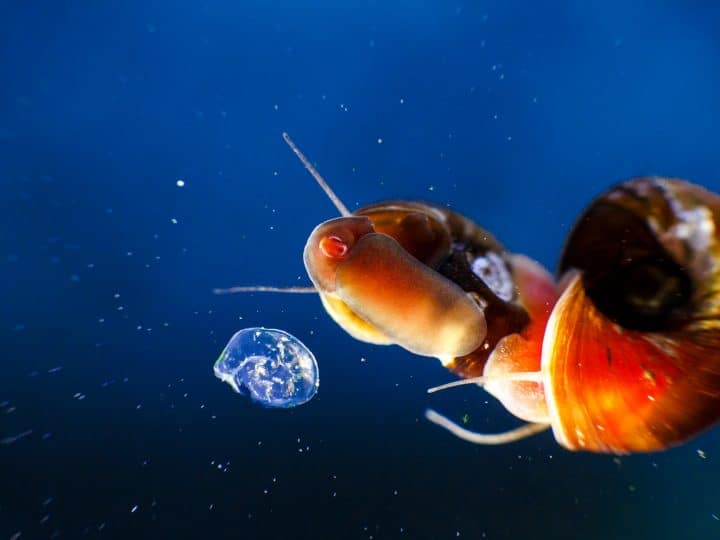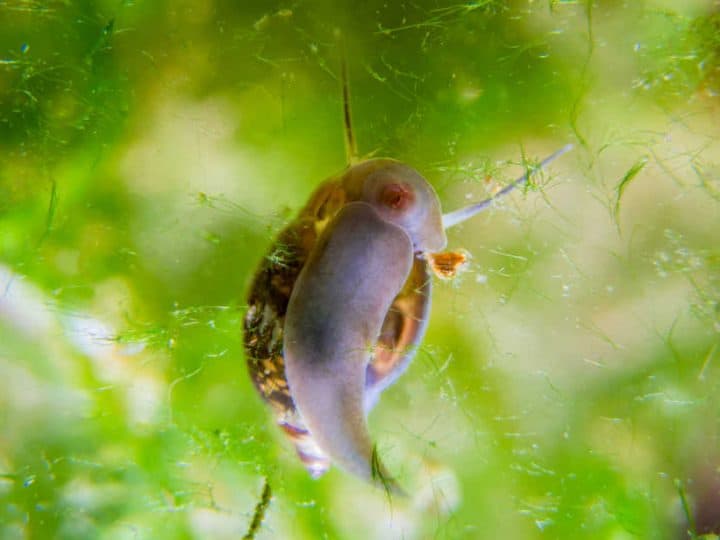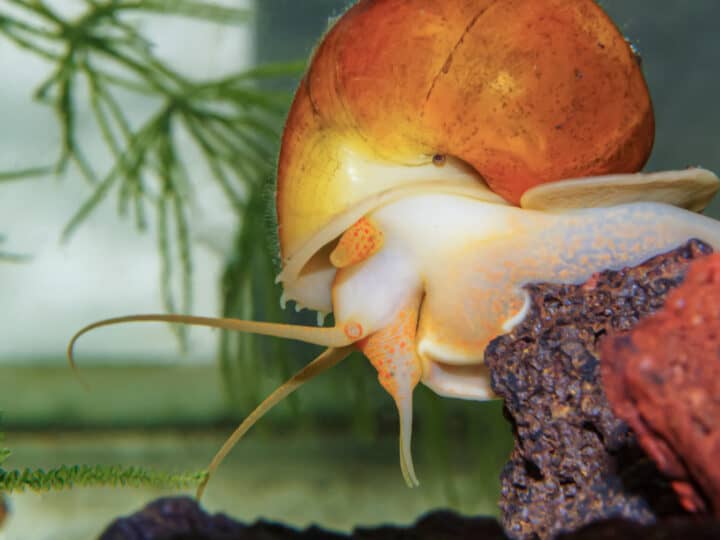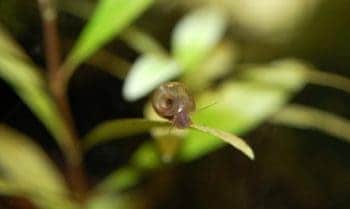After I’d taken some aquarium snails home from the store, I was absolutely stoked! Within a week I noticed some eggs, but I was unsure what to do. Since then, I’ve come a long way and I’m here to tell you what you’re looking for.
Quick Answer
If an aquarium snail lays eggs, there are two options. Remove the eggs from the tank when more snails are unwanted. To maximize the chance of hatching, it’s best to leave the eggs alone as they contain everything they need.
But now you only know the short answer, and there are most definitely some other things you should know. It’s important to recognise snail eggs, learn how to take care of babies and learning the difference between fertile and infertile eggs. Let’s quickly go over some of these points.
What do water snail eggs look like?
Different species of snails have different types of eggs. The most recognisable eggs are laid by Apple snails and Mystery snails. These snails lay large clumps of eggs above the water level, so out of the water! They often stick their eggs to exposed glass.
Here is a picture of a clump of eggs, novice fishkeepers are often surprised and confused whenever they find their first clump of snail eggs. I can definitely imagine why!
Other snail eggs are more subtle and often are stuck to the inside of your aquarium glass. Great examples are ramshorn snails. These snails lay a couple of dozen eggs in a transparent slime. The eggs are way smaller than the ones from the apple snail, and are a bit harder to notice. Chances are you’ll find the ones on the front glass panel of your tank but miss the eggs stuck to plant leaves or driftwood.
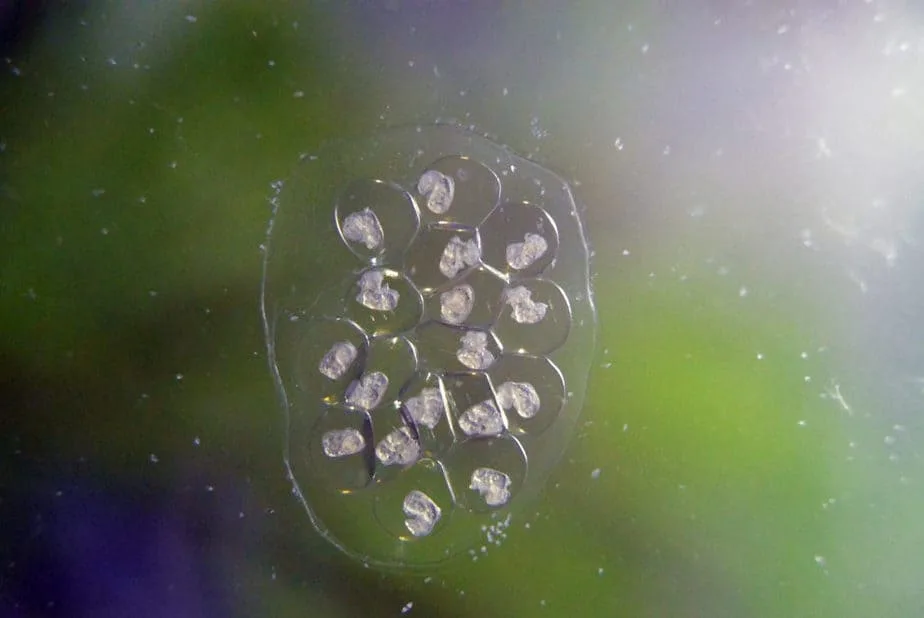
Nerite snails scatter their eggs all around the tank, and stick eggs to everything inside the tank. They only lay one egg at the time, and let me tell you that these eggs won’t hatch in your tank. The reason is that the eggs need brackish or even salt water to hatch, but the full grown snails are able to live in freshwater.
Nerite snails are great algae eaters and highly suitable for people who’re scared that snails will reproduce quickly and take over their aquarium, but you’ve got to deal with unhatched eggs that are tough to remove.
Other species like Malaysian Trumpet Snails as well as Rabbit Snails don’t lay eggs but give birth to live babies. You won’t be finding any of their eggs in your tank, that’s for sure!
Finally let’s briefly mention Assassin Snails. These snails don’t lay as many eggs. You’ll be able to recognize an assassin snail egg as a single white egg. It’s small and usually stuck in some nook or cranny in your tank. A crack in your driftwood or a crevice in a rock makes their heart beat quicker.
What to do when you’ve found snail eggs?
When you’ve found eggs in your aquarium, you get to choose whether you want to remove them or let them be and allow them to hatch. If you want to get some baby snails, just let the eggs be. They’ve got plenty of nutrition in their eggs and the slime they’re encapsulated with.
Tip: one of the best ways to remove snails from your aquarium is by using a snail trap and some bait. They are readily available on Amazon, don’t require chemicals and are super effective. Check them out here, they might be perfect for you!
If you really want to maximize chances to breed this snail, you could remove all other snails and fish from the tank so they won’t eat the eggs. I would say this is unnecessary and too much of a hassle, but be my guest. Obviously this is not necessary with Apple- and Mystery Snails as those eggs are out of the water.
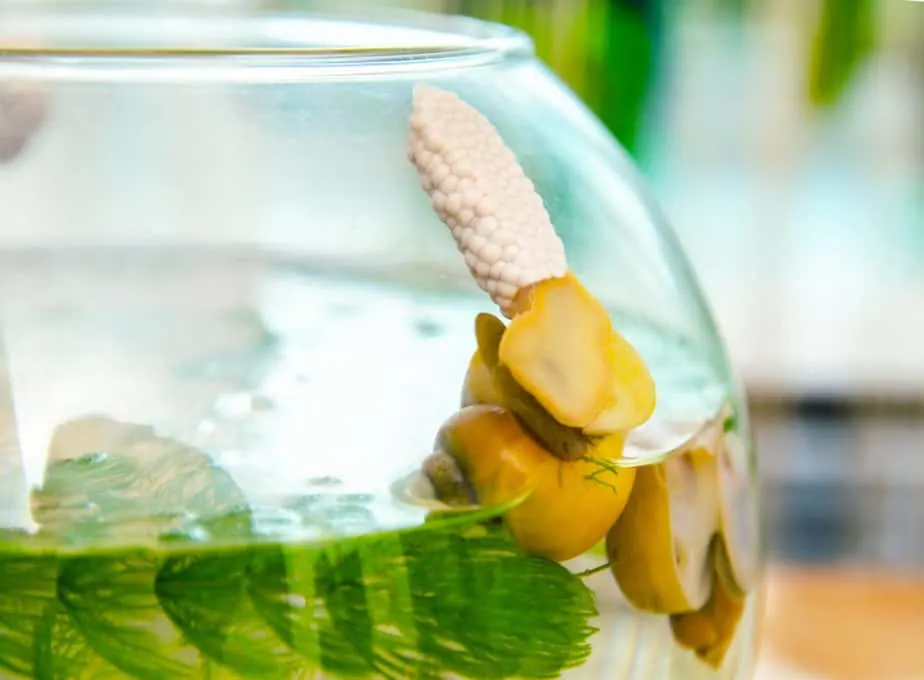
When you don’t want more snails in your aquarium, now’s the time to remove the eggs from the tank. It’s because of this reason that Apple snail and Mystery snails are super convenient when you want to control the population. The eggs are easy to spot and simple to remove. With nerite snails, just let the eggs be as they won’t hatch anyways for reasons explained earlier.
How to take care of baby snails
Great! You’ve decided to allow the eggs to hatch. Now, after a couple of weeks the eggs will hatch and you can potentially spot some baby snails in your aquarium. These snails will be tiny and are able to feed or algae and biofilm in your tank. You don’t have to buy dedicated baby snail food.
To supplement the diet of your snails in your aquarium, blanched vegetables like cucumber, zucchini or lettuce is highly appreciated. To blanch these vegetables, briefly boil them in water. This will make sure they sink instead of float when you add it to your tank. Leave it in your tank for no longer than 36 hours. Some people recommend 24, but just don’t go over 48 hours.
How to control your snail population
With many snails, just removing the eggs is not sufficient, because it’s almost impossible you’re going to find all eggs stuck to random places in your aquarium. If you’re not a huge fan of snails and you notice that the snails in your tank are rapidly reproducing, chances are there is something that causes this. Often, a snail infestation means you’re overfeeding. The first thing you should do is make sure you’re not overfeeding, just add the food your fish will eat.
Oh and if you’re wondering how these tiny snails entered your tank, they probably hitchhiked on plants you bought from the store.
To remove a lot of snails at once, feed them a big piece of cucumber. If you want 24 hours you’ll notice many snails piled up on the cucumber, and all you have to do is take it out. If you repeat this process a couple of times, you’ll remove most of the snails. Just make sure you also tackle the source of the rapid multiplication.
Other methods to control a snail population are introducing assassin snails to your tank, adding fish that eat snails or making an effort to remove any snails you see by hand. I’ve personally bought some assassin snails when I was experiencing loads of “pest” snails, and they work wonders.
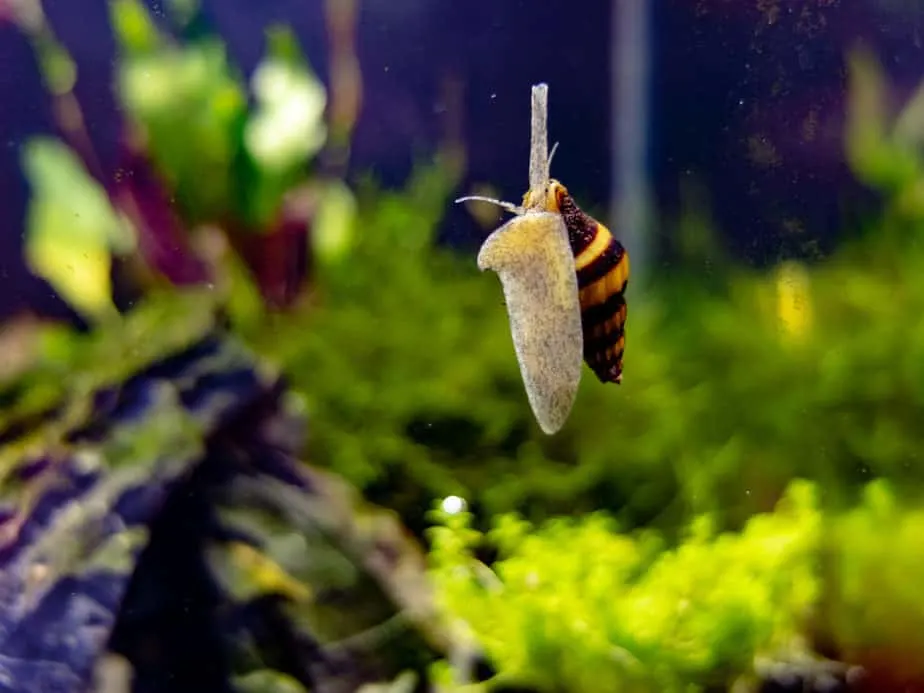
What you should not do is use chemicals to kill all snails in your tank. Adding chemicals to an aquarium is something you should avoid anyhow, but there are just many other ways that do not harm your other invertebrates and stress out your fish.
How often do common aquarium snail types lay eggs?
Snails can lay eggs multiple times per year. Assassin snails and rabbit snails breed slowly while pond snails, ramshorn snails and malaysian trumpet snails can breed each month. The amount of eggs differs per species. It takes a couple of weeks for the eggs to hatch.
If there’s plenty of food available for the snails, they will lay eggs more often. In warmer temperatures the time it takes for the eggs to hatch shortens.
My favorite fishtank products that make life easier
I am so happy you enjoy this post so far! You will also definitely like my product recommendations that will make your fishkeeping experience so much better. I’m 100% sure you’ll love them!
- Without a gravel vacuum, like one from Aqueon, cleaning the substrate of your tanks is near impossible. Whenever I want to remove some of the sunken detritus from the bottom of my acrylic tanks I’m happy I’ve got one of these.
- It’s no secret that I do not like nutritious aqua-soil. It makes a mess and only works for a given amount of time. Instead, I always use a liquid aquarium plant fertilizer. Everyone who keeps live plants needs it, it’s not that expensive and makes your plants grow better.
- I love keeping plants, but planting and reorganizing my aquarium was difficult until I got a set of these tools. It’s much easier to plant any kind of plant compared to using my thick fingers.
- Ever since I’m able to accurately test my water parameters, including the pH level, keeping fish became less stressful. Before I was always stressed that my water parameters were wrong, but with a kit such as the API Master kit, I can measure this. It really is essential to successful fishkeeping.
- The more you know about your aquarium, the better! Temperature is crucial for the health of your fish. A thermometer will also show you whether your heaters are still working correctly. It will give you more insight and more peace of mind. It’s an easy way to ensure that you’re providing your fish with the tropical temperatures they need.

